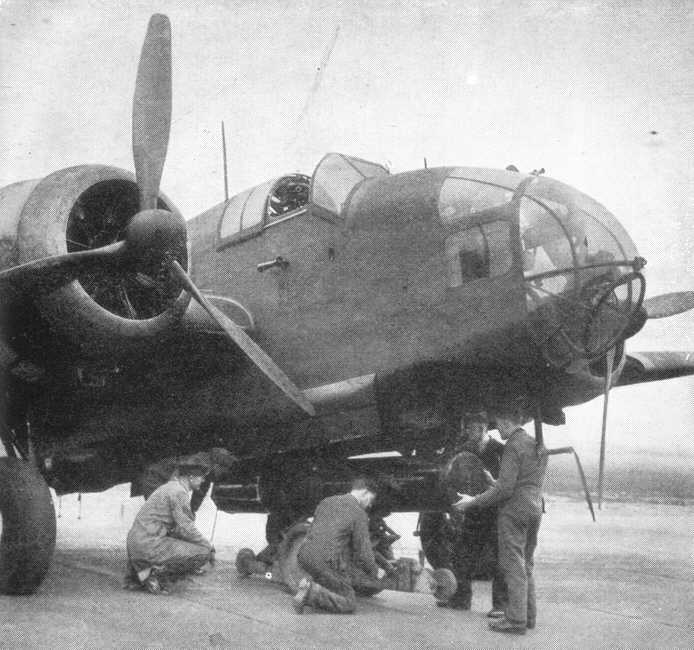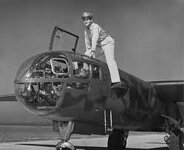After watching Kermit Weeks get into his Douglas A-26 Invader, I wondered what other aircraft were difficult for the pilot to enter. At an airshow, I went into an Invader cockpit from the bomb bay. Kermit had to get a ladder, climb up onto the wing, open the canopy while kneeling on the plane's spine then slide in. I know the Douglas A-20 was another that looked tricky. Then I saw a video on the Handley-Page Hampton and that looked tricky too. The U.S. used rough black non-skid paint or something on the wing root of some planes to help pilot or crew chief from slipping. That appears to be an American thing.
Navigation
Install the app
How to install the app on iOS
Follow along with the video below to see how to install our site as a web app on your home screen.
Note: This feature may not be available in some browsers.
More options
You are using an out of date browser. It may not display this or other websites correctly.
You should upgrade or use an alternative browser.
You should upgrade or use an alternative browser.
Making the pilot's job harder
- Thread starter Maxrobot1
- Start date
Ad: This forum contains affiliate links to products on Amazon and eBay. More information in Terms and rules
More options
Who Replied?With the Hampden th navigator sat behind the pilot, he couldnt get out until the pilot got out, and then he folded the seat to escape.After watching Kermit Weeks get into his Douglas A-26 Invader, I wondered what other aircraft were difficult for the pilot to enter. At an airshow, I went into an Invader cockpit from the bomb bay. Kermit had to get a ladder, climb up onto the wing, open the canopy while kneeling on the plane's spine then slide in. I know the Douglas A-20 was another that looked tricky. Then I saw a video on the Handley-Page Hampton and that looked tricky too. The U.S. used rough black non-skid paint or something on the wing root of some planes to help pilot or crew chief from slipping. That appears to be an American thing.
I believe the navigator could just pop out the hatch above his position. No?With the Hampden th navigator sat behind the pilot, he couldnt get out until the pilot got out, and then he folded the seat to escape.
Not according to wikiI believe the navigator could just pop out the hatch above his position. No?
The slim and compact fuselage of the aircraft was quite cramped, being wide enough only for a single person. The navigator sat behind the pilot and access in the cockpit required folding down the seats. Once in place, the crew had almost no room to move and were typically uncomfortable during long missions.[14] Aircrews referred to the Hampden by various nicknames due to this, such as Flying Suitcase, Panhandle, and Flying Tadpole.[4]
Shortround6
Lieutenant General
4 men or 5 men?
Or one man has two parachutes depending on where he is sitting?
- Thread starter
- #6
Not according to wiki
The slim and compact fuselage of the aircraft was quite cramped, being wide enough only for a single person. The navigator sat behind the pilot and access in the cockpit required folding down the seats. Once in place, the crew had almost no room to move and were typically uncomfortable during long missions.[14] Aircrews referred to the Hampden by various nicknames due to this, such as Flying Suitcase, Panhandle, and Flying Tadpole.[4]
Looks like he might be able to squeeze through in pinch.
The diagram above is very crude but does show two escape routes from the nose section. There is a much more detailed diagram on this page.

 wingcotomjefferson.wordpress.com
wingcotomjefferson.wordpress.com
The Hampden initially had a crew of 4. Pilot, navigator/bomb aimer, radio operator/gunner and a gunner.
Note there was a position in the nose for the navigator/bomb aimer. It came with a drift sight (19) and a folding chart table (27) to allow him to navigate, as well as the bomb sight. There was also stowage for a parachute (36) and an escape hatch (33) in the lower side of the aircraft in this section.
There was a crawl space from the nose section, under the floor of the pilot's cockpit into the fuselage space behind the pilot. That provided a convenient if very narrow route to avoid him being in the nose during take off and landings in the event of an accident. And there was another escape hatch in the cabin roof of that section just ahead of the radio mast (51).
The interior photo is of a later modification when additional guns were fitted in beam positions, sometimes with an extra gunner being carried. That was just ahead of the great bulkhead (58), which can be seen in the photo.

Handley Page Hampden
Handley Page Hampden was named in Honour of English Civil War Patriot – John Hampden The Handley Page HP52 Hampden was Designed by Gustav Lachmann to meet Air Ministry Specification…
The Hampden initially had a crew of 4. Pilot, navigator/bomb aimer, radio operator/gunner and a gunner.
Note there was a position in the nose for the navigator/bomb aimer. It came with a drift sight (19) and a folding chart table (27) to allow him to navigate, as well as the bomb sight. There was also stowage for a parachute (36) and an escape hatch (33) in the lower side of the aircraft in this section.
There was a crawl space from the nose section, under the floor of the pilot's cockpit into the fuselage space behind the pilot. That provided a convenient if very narrow route to avoid him being in the nose during take off and landings in the event of an accident. And there was another escape hatch in the cabin roof of that section just ahead of the radio mast (51).
The interior photo is of a later modification when additional guns were fitted in beam positions, sometimes with an extra gunner being carried. That was just ahead of the great bulkhead (58), which can be seen in the photo.
Yes, damn tricky!Then I saw a video on the Handley-Page Hampton and that looked tricky too.
Eng
- Thread starter
- #10
Users who are viewing this thread
Total: 1 (members: 0, guests: 1)

